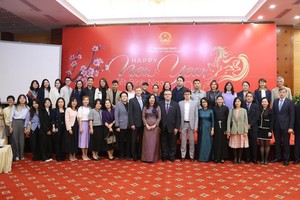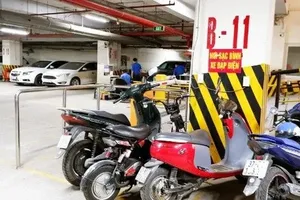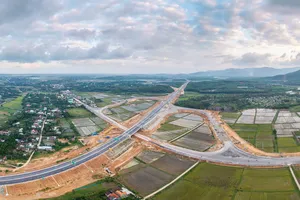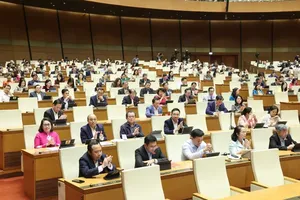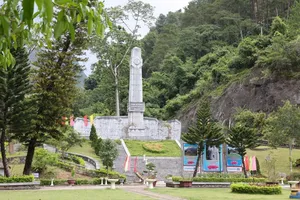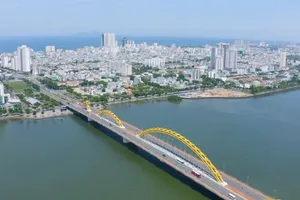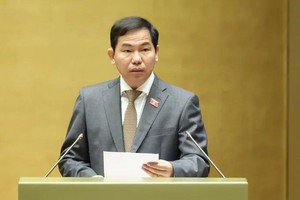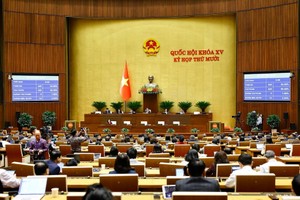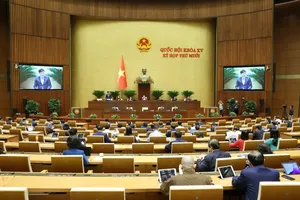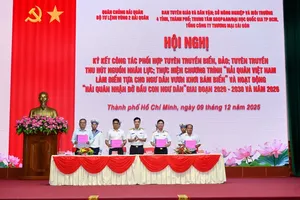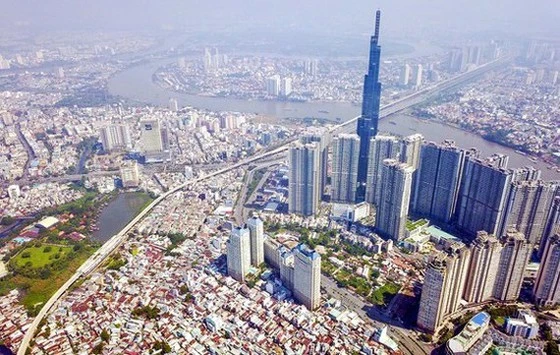
The plan stipulates that, wherever possible, the newly established administrative units should retain part of the names of pre-existing entities prior to their merger. This approach is intended to minimize disruptions for residents and businesses that would otherwise be affected by changes to official documents and geographic identifiers at the provincial level.
Names for the new units should be clear, concise, easily recognizable and memorable, while also reflecting a logical, systematic structure. They should highlight the unique strengths of each locality and align with broader trends in regional and international integration.
The proposal also encourages exploring naming conventions for communes and wards based on numerical sequences or incorporating the name of the original district-level administrative unit along with a number to support efforts in digitization and data management.
Importantly, the names of newly created communes and wards must not duplicate existing names of same-level administrative units within the same province or centrally governed city, or within the anticipated administrative boundaries under the approved provincial reorganization plan.
The administrative-political center of any new unit should be strategically located, with robust socio-economic infrastructure and a well-developed transportation network—such as airports, highways, and ports—enabling strong connectivity within the province or city, as well as with major urban centers, national economic hubs, or coastal zones. These centers should offer potential for future expansion and be in harmony with the long-term socio-economic development strategy of the new administrative unit. The plan also emphasizes the importance of balanced territorial integration and the preservation of national defense and security.
Once the new administrative structures are operating smoothly, local authorities may consider planning and constructing new, modern administrative-political centers, aligned with the region’s growth trajectory and designed to support future development needs.
The restructuring of provincial-level administrative units is guided by six core criteria: natural land area, population scale, historical and cultural identity, geo-economic factors, geopolitical significance, and considerations of national defense and security.
In line with these criteria and the strategic directives of the Politburo and the Party Secretariat, the Government has undertaken a comprehensive, multidimensional analysis—rooted in innovative thinking and long-term strategic vision—to develop a detailed plan for the consolidation and reorganization of provincial-level administrative units. This proposal has been submitted to the Politburo and the Party Central Committee for final approval.
Accordingly, a total of 52 provincial-level units are earmarked for restructuring. These include four centrally administered cities—Hai Phong, Ho Chi Minh City, Da Nang, and Can Tho—along with 48 provinces: Ha Nam, Hung Yen, Vinh Phuc, Bac Ninh, Thai Binh, Hai Duong, Nam Dinh, Ninh Binh, Bac Kan, Thai Nguyen, Phu Tho, Bac Giang, Hoa Binh, Tuyen Quang, Lao Cai, Yen Bai, Ha Giang, Ninh Thuan, Quang Tri, Phu Yen, Quang Binh, Quang Ngai, Khanh Hoa, Dak Nong, Tay Ninh, Binh Duong, Binh Thuan, Binh Phuoc, Ba Ria - Vung Tau, Ben Tre, Bac Lieu, Vinh Long, Hau Giang, Tra Vinh, Tien Giang, Soc Trang, Dong Thap, An Giang, Long An, Ca Mau, Quang Nam, Binh Dinh, Dak Lak, Dong Nai, Gia Lai, Kon Tum, Lam Dong, and Kien Giang.
Cao Bang Province, however, is an exception. Despite its total land area reaching only 6,700.4 square meters—equivalent to 83.8 percent of the required threshold—it is excluded from the restructuring process due to a combination of strategic, geographic, and demographic factors. The province shares an extensive and sensitive border with China, and its terrain is mountainous, fragmented, and extremely challenging to navigate. Additionally, ethnic minorities account for nearly 95 percent of the local population. Surrounding provinces are not viable merger candidates: to the west, Ha Giang is already planned to merge with Tuyen Quang to form a new, expansive province; to the south, Bac Kan is designated for merger with Thai Nguyen; and to the east, Lang Son already satisfies both area and population standards. A merger between Cao Bang and Lang Son would result in a new province with an excessively long border, creating significant complexities for national defense and border security operations.
The proposed restructuring of 52 provincial-level administrative units outlines the following specific mergers:
1. Ha Giang and Tuyen Quang will merge into a new province named Tuyen Quang, with its administrative and political center in Tuyen Quang City.
2. Lao Cai and Yen Bai will form the new Lao Cai Province, headquartered in Yen Bai City.
3. Bac Kan and Thai Nguyen will merge into Thai Nguyen Province, with Thai Nguyen City as the center.
4. Hoa Binh, Vinh Phuc, and Phu Tho will be consolidated into a new Phu Tho Province, centered in Viet Tri City.
5. Bac Giang and Bac Ninh (already planned to become a centrally governed city by 2030) will form a new Bac Ninh Province, with Bac Giang City as the capital.
6. Thai Binh and Hung Yen will merge into Hung Yen Province, with the center remaining in Hung Yen City.
7. Hai Duong and Hai Phong will merge into a centrally governed city named Hai Phong, with the new center in Thuy Nguyen City.
8. Ha Nam, Nam Dinh, and Ninh Binh (which is projected to meet the criteria for centrally governed city status by 2030) will merge into Ninh Binh Province, centered in Hoa Lu City.
9. Quang Binh and Quang Tri will merge into Quang Tri Province, with Dong Hoi City as the capital.
10. Quang Nam and Da Nang will be consolidated into a centrally governed city named Da Nang, with its center in Hai Chau District.
11. Kon Tum and Quang Ngai will merge into Quang Ngai Province, headquartered in Quang Ngai City.
12. Gia Lai and Binh Dinh will merge into Gia Lai Province, with its administrative center in Quy Nhon City.
13. Ninh Thuan and Khanh Hoa (slated to become a centrally governed city by 2030) will merge into Khanh Hoa Province, with Nha Trang City as the capital.
14. Dak Nong, Binh Thuan, and Lam Dong will consolidate into Lam Dong Province, with Da Lat City as the center.
15. Phu Yen and Dak Lak will merge into Dak Lak Province, centered in Buon Ma Thuot City.
16. Ba Ria - Vung Tau, Binh Duong, and Ho Chi Minh City will combine into an expanded Ho Chi Minh City, retaining its status as a centrally governed city, with District 1 as the political-administrative hub.
17. Binh Phuoc and Dong Nai will merge into Dong Nai Province, with Bien Hoa City as the capital.
18. Tay Ninh and Long An will form Tay Ninh Province, with the center in Tan An City.
19. Soc Trang, Hau Giang, and Can Tho will merge into a newly structured centrally governed city named Can Tho, with its center in Ninh Kieu District.
20. Ben Tre, Vinh Long, and Tra Vinh will consolidate into Vinh Long Province, headquartered in Vinh Long City.
21. Tien Giang and Dong Thap will merge into Dong Thap Province, with the administrative center in My Tho City.
22. Bac Lieu and Ca Mau will form Ca Mau Province, with Ca Mau City as the capital.
23. Kien Giang and An Giang will be consolidated into An Giang Province, headquartered in Rach Gia City.
Meanwhile Hanoi, Hue City, Lai Chau, Dien Bien, Son La, Lang Son, Quang Ninh, Thanh Hoa, Nghe An, Ha Tinh, and Cao Bang are not subject to reorganization.
